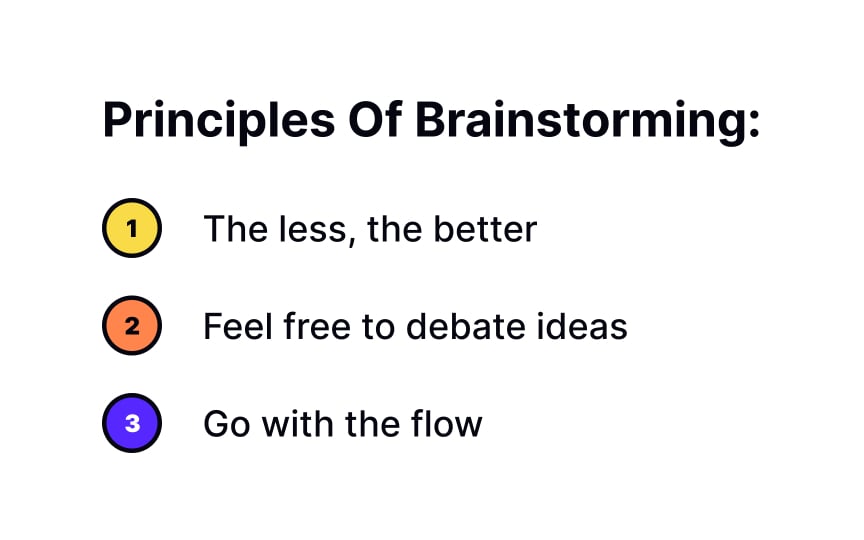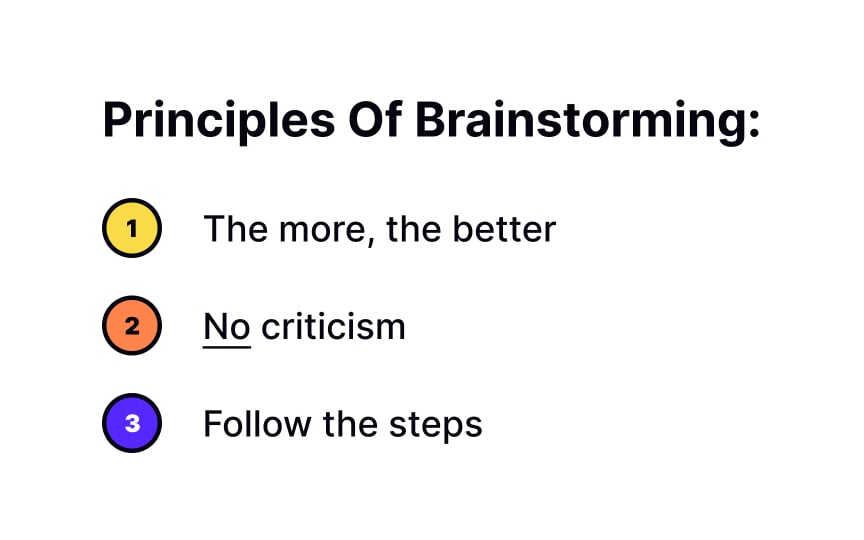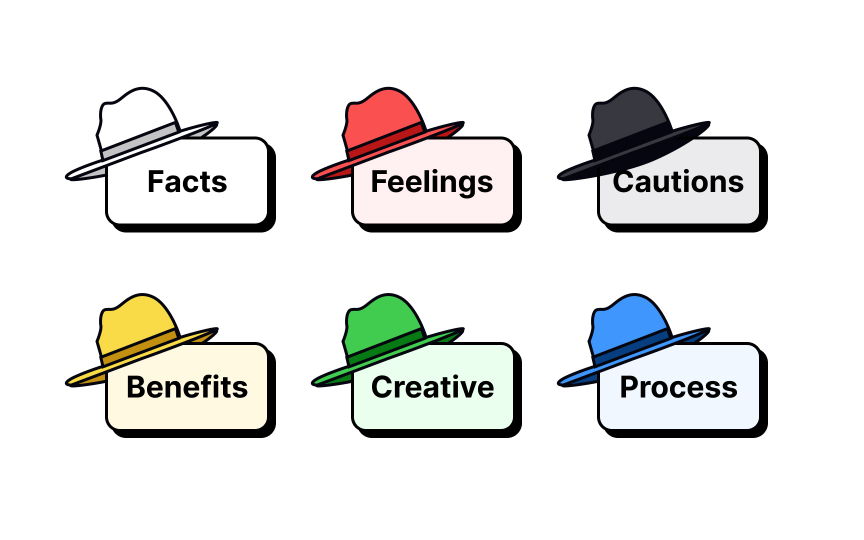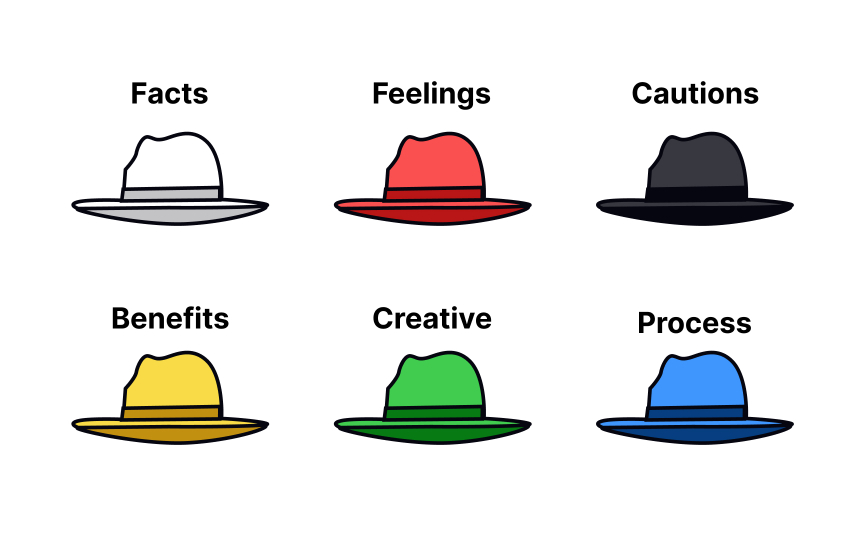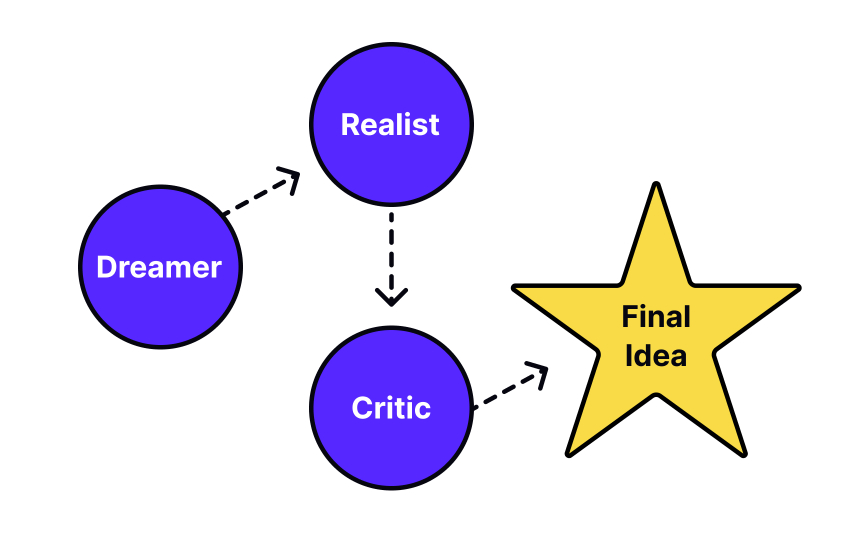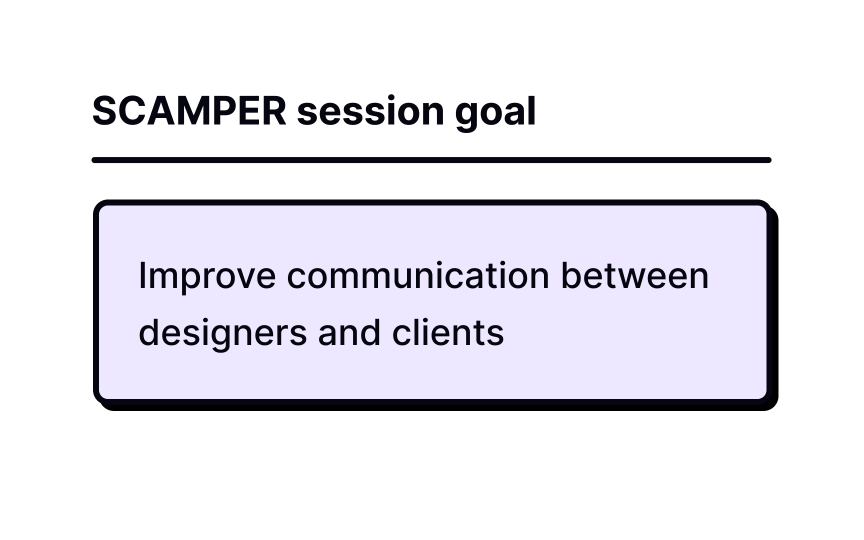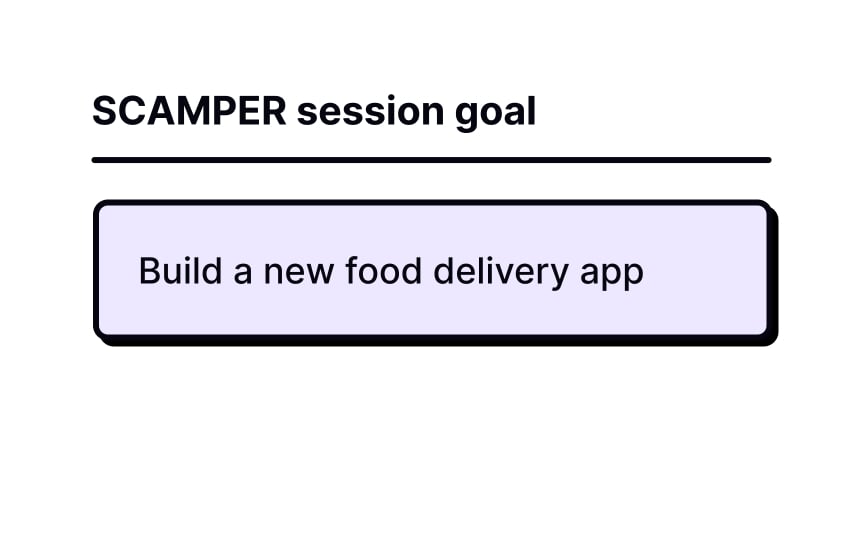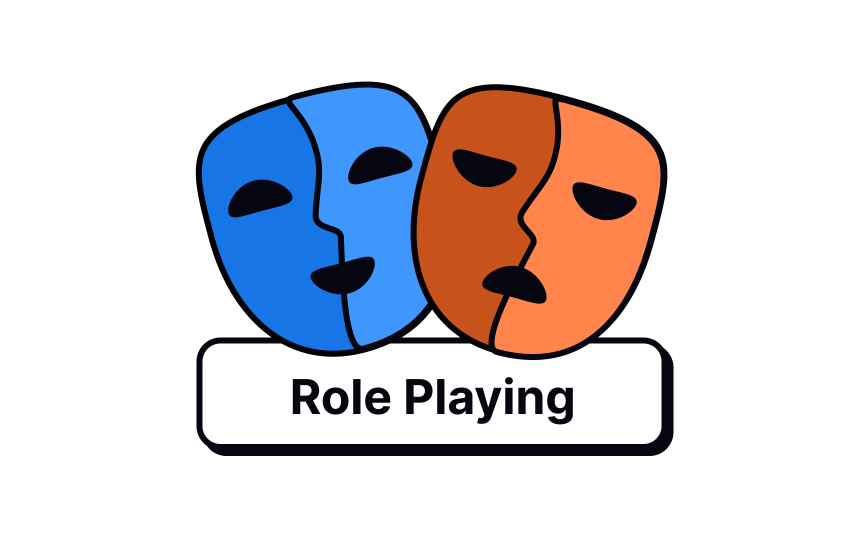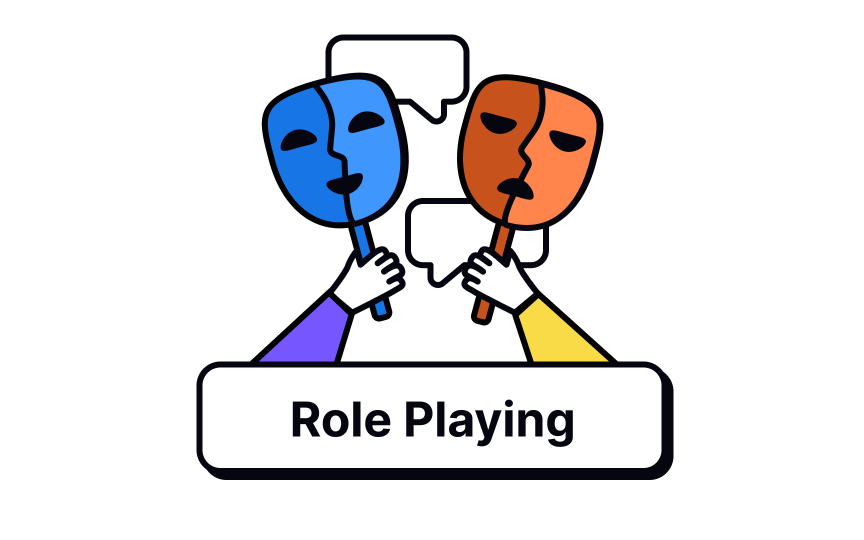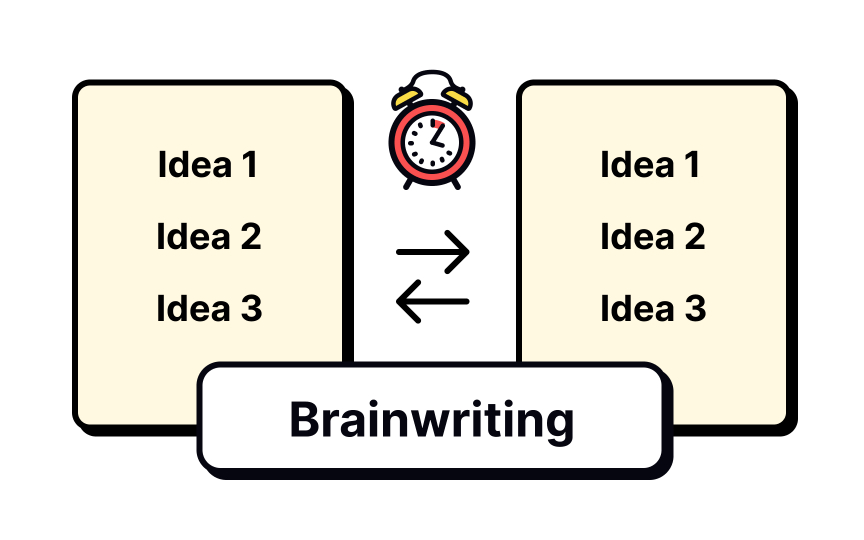Activities for Brainstorming in Design Workshops
Learn different techniques to promote creative brainstorming during a design workshop
Brainstorming is a group thinking activity. In a typical session, participants are invited to look at a problem or subject from different angles and come up with solutions or ideas. The rationale here is to capitalize on the collective thinking of the group and build on each other's ideas.
If not organized properly, dominant participants could control the discussion, and quiet participants could shy away. A well-structured brainstorming activity ensures that all voices are heard and that you end up with the most diverse and useful lot of ideas.
Spend some time at the start of any brainstorming session to explain the purpose of the session, how it’ll work, what each participant is expected to do, and what the results will be used for.
Whatever
- The more, the better. It doesn’t matter if an idea is redundant, ridiculous, or downright hilarious. Encourage participants to keep them coming. This will broaden your pool of choices and also allow participants to get rid of their creative inhibitions.
- No criticism. This one goes without saying. Criticism is the death knell of creativity when it comes to brainstorming. Allow people to speak their minds freely without judgment from superiors or other team members.
- Follow the steps. Organize your brainstorming activity in alignment with your workshop goals. Also, be sure to wrap it up on time, so it doesn't hinder other parts of your workshop.[1]
A postup is an activity where participants individually jot down their ideas on sticky notes and then post them on a wall. These ideas are then discussed, validated, and saved. This method of
- Use it in groups of no more than 30 people
- Set time constraints — for example, 3-20 minutes for individual idea generation and about 5-20 minutes for group discussion
- Ask each participant to produce at least a certain number of sticky notes
- Use anonymous notes when there is a hierarchy in the room that can influence ideas or if the content being discussed is sensitive[2]
The Six Thinking Hats, in simple terms, is an exercise in getting participants to look at a topic from different perspectives. Each of psychologist Edward De Bono’s differently colored “thinking hats” represents a certain way of perceiving reality:
- White hat: Stands for objectivity, i.e., the facts and the statistics of the matter at hand
- Red hat: Stands for instinctive and unproven emotions towards an issue
- Black hat: Stands for exercising caution and outlining possible caveats and setbacks
- Yellow hat: Stands for optimism and outlining what’s working at the moment
- Green hat: Stands for optimistic creativity that fosters improvement and innovation
- Blue hat: Stands for summarizing, organizing, and preparing for the next steps
This activity is a great way to generate and evaluate ideas about a service, product, or feature multi-dimensionally.
When preparing for a Six Thinking Hats session, note down what each hat color will stand for and make this information clearly and readily available to participants. Feel free to deviate from the universal meanings of each hat and adapt it to your workshop goals. It would be a good idea to print this information out on a sheet and hand it out for everyone to refer back to at any point in the exercise.
A Six Thing Hats
- Donning the thinking hats: Set up a screen that displays a thinking hat for a set duration. For example, start with the white hat and have it on screen for 5-10 minutes. Follow this up with the blue hat, green hat, red hat, and so on until you’ve covered all 6. You can have participants wear physical hats, but it’s completely optional.
- Noting down ideas: First, instruct people to adopt the perspective associated with the hat on display. For example, ask people to list all the facts they know about the problem at hand when the white hat is on display. Next, have them note these down on sticky notes, one idea per note, and repeat it for all 6 hats.
- Engaging in discussion: Have all participants post their ideas on a surface. You can proceed to discuss these ideas as is or group similar ideas together in clusters and prioritize them.
Pro Tip: This activity is best suited for groups of 5-8 members. If there are more people, divide them into smaller groups and assign a facilitator for each group. Have a representative from each group summarize the best of their ideas at the end.
Walt Disney’s Creative Strategy is a personal
What are these roles exactly?
- Dreamer: Someone who generates as many ideas as possible without worrying about the limitations
- Realist: The person can turn ideas into step-by-step plans and find the necessary resources to achieve them
- Critic: The one in charge of analyzing risks and ensuring the safety of the idea[3]
By having your brainstorming group first brainstorm ideas as dreamers, you gain a larger pool of wildly innovative ideas. By having them brainstorm as realists next, you get them to tap into their resourcefulness. Lastly, having them brainstorm in critic mode helps you identify potential pitfalls in your plan and eliminate them as effectively as possible. The list of ideas that make it to the end of this exercise are ones that are creative, realistic, and relatively low on risk.
If you’re
SCAMPER is an acronym, with each letter standing for a way of modifying a product:
- Substitute (S): Can you substitute a part of your product with something else?
- Combine (C): Can you combine some or all of your existing features?
- Adapt (A): Are there other products that could be used to achieve the same goal as your product?
- Modify (M): Can you modify some or all aspects of your product?
- Put to other uses (P): Can your product be used for other things than how you intended for it to be used?
- Eliminate (E): Can you get rid of any features or components of your product?
- Rearrange/Reverse (R): Can you interchange the components or sequence of your product?
To conduct a SCAMPER session, divide a large wall or board into 7 halves titled S, C, A, M, P, E, and R. Allocate time for participants to brainstorm individual ideas under each section and ask them to post it up under the respective wall section. Then, go over these ideas as a group, form clusters out of similar ideas, and prioritize them.
Role-playing is an activity that involves acting out another perspective, such as a user’s, a system’s, or a team member’s. It improves empathy among participants and allows them to change the way they look at and approach a problem.
Role-playing can be of two types:
- Role-playing as a system: Here, a participant is asked to play the role of a system that interacts with a user. The participant can only answer the user (played by another participant) from a list of prompts that contain information that the system knows. This works as a review mechanism to assess gaps within the system and improve it.
- Role-playing as a user/team member: This helps participants look at an issue from multiple angles, for example, a developer’s, a project manager’s, a finance manager’s, etc. Assign a role to each participant, have them act out this role and generate ideas while they stay in character. This activity can be used to encourage new perspectives and reassess priorities.[4]
Pro Tip: Role-playing can be uncomfortable for many if it is outside their comfort zone. Make it easier by introducing props and changing up the layout of the room.
Speaking up aloud in a room full of people is not everyone’s cup of tea. But that doesn’t mean they don’t have anything worth saying. Encourage ideas from everyone in the room with brainwriting, a non-verbal exercise that promotes individual thinking and collaboration through writing.
The most common format of brainwriting is the 6-3-5 format. Here, 6 people write down 3 ideas each within 5 minutes on a piece of paper. Next, everyone swaps their papers, reads what's on them, and then adds 3 more ideas. These can be new ideas or ones that build on existing ideas. This goes on for a good 6 rounds, after which all sheets of paper are collected and the ideas on them discussed.
Feel free to play around with the number of people, ideas, and rounds in this exercise according to your workshop needs.[5]
References
- Organizing Brainstorming Workshops: A Designer’s Guide — Smashing Magazine | Smashing Magazine
- Foundational UX Workshop Activities | Nielsen Norman Group
- Organizing Brainstorming Workshops: A Designer’s Guide — Smashing Magazine | Smashing Magazine
- Foundational UX Workshop Activities | Nielsen Norman Group
Top contributors
Topics
From Course
Share
Similar lessons

Design Workshop Basics

Design Workshop Types

